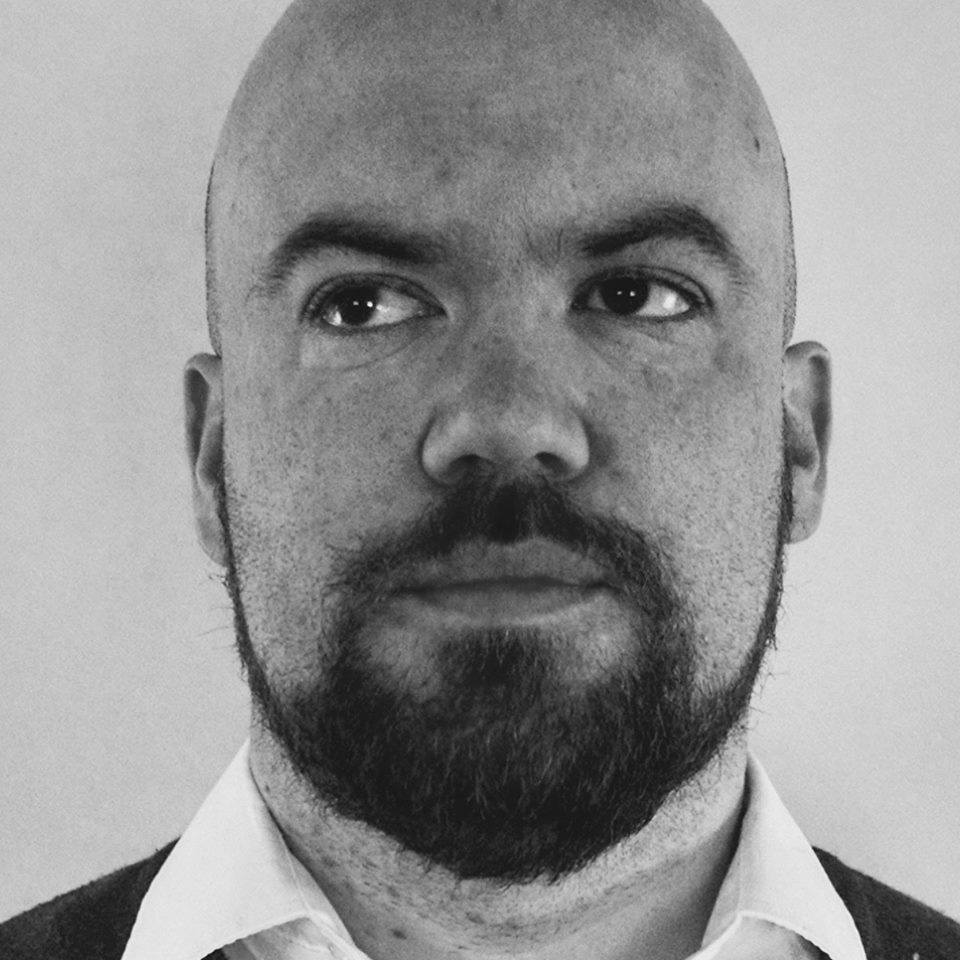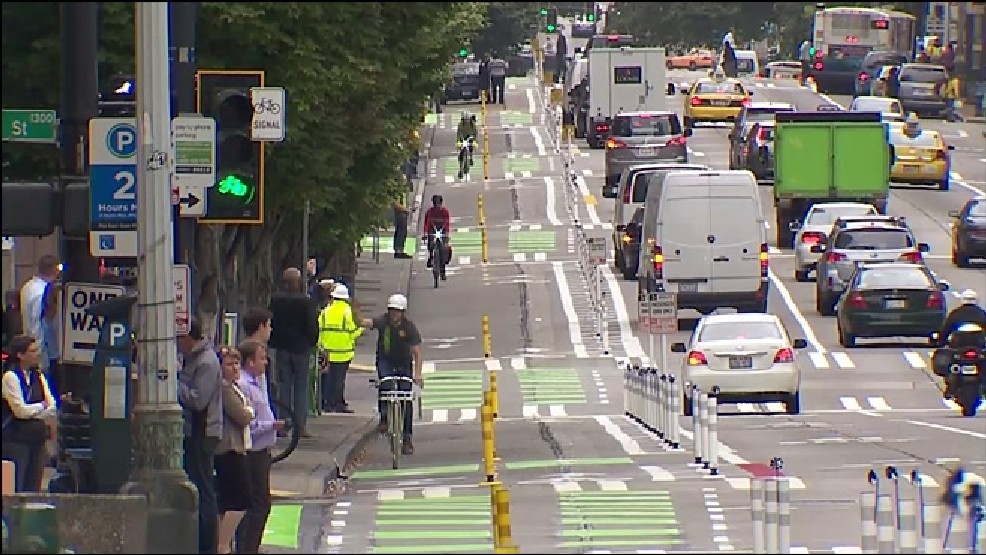How To Add A Bike Lane Without Making Traffic Worse

By:
More Americans than ever are riding bicycles in urban areas, with the number of trips made by bicycle more than doubling — 1.7 billion in 2001 to 4 billion in 2009 —in the last decade.
Municipal planners are incorporating cycling into cities across the U.S. But there are challenges to balancing healthier, more environmentally conscious travel options and consistent traffic flow.
Who owns the roads?
The bicycle and the automobile were both created in the 19th century, but in America it's the latter mode of transportation that has taken control of urban planning.
Reporter Adam Mann reflected on that shift in planning in a 2014 Wired article, pointing out that roads have been around for thousands of years and have only recently become the car-centric byways we know now.
The roads don’t control us, we control them. We can design them to carry whatever types of traffic we feel are useful, and provide for safe and convenient passage of those different modes. But after World War II, many forces in the US—suburban planning, interstate highway development, the movement of the middle-class out of cities—conspired to create a motorist-dominated streetscape.
But it doesn't have to be that way.
If you're looking for how designing for a more bike-friendly city can have an impact, look no further than Macon, Georgia. In that city, temporary bike lanes led to increases in cycling. As Helena Kotala reported,
In the two weeks that the lanes were up, bike traffic increased by nearly 900 percent, more city residents were inspired to ride instead of drive and many residents also visited places that they normally wouldn’t because of the ease of access.
And in La Crosse, Wisconsin, an $18,000 bike lane and turn lane project was just completed.
Yet the debate rages on.
In Little Rock, Arkansas, motorists and cyclists are learning to get along under the watchful eye of the municipal government as bike lanes open and their use is interpreted through legal statue. In Baltimore, residents are divided between those advocating for more lanes in the city and those wanting a slower rollout of the new traffic pattern.
Andre Roberge, a baggage handler at Amtrak in Seattle and bike commuter, said that the tension between cyclists and drivers likely won't be lessened by more bike lanes. If anything, Roberge said, it might make things worse.
"I don't think bike lanes solve the issue of bike inclusiveness," Roberge told ATTN: and added, "instead, it may further drive a wedge in the cars vs bike battle."
Yet there are concerns over bike lanes that transcend utility. Peter Flax, a journalist who's involved in bike advocacy in L.A., told ATTN: that bike lanes in the city also run into problems from residents who fear it will lead to more congestion.
Here in L.A., the public reaction to any project that involves losing a lane for cars to create a bike lane temporarily causes hysteria. Even if there are hundreds of historical examples that show the impact to traffic will be minimal, people are aggressively protective of their car lanes.
 komo news - sinclairstoryline.com
komo news - sinclairstoryline.com
And even cities that are taking an aggressive approach to bike lanes are finding that it's not so easy to make the change Take Cambridge, Massachusetts, for instance, where attempts to roll out bike lanes aren't moving fast enough. While city officials are itching for more lanes, Director of Traffic, Parking, and Transportation Joseph E. Barr says there's not enough data to prove the efficacy and safety of the lanes.
"[O]bviously we want to back that up with statistics as well to the extent that we can," Barr told Boston area media outlet Wicked Local.
But bike lanes aren't necessarily indicative of future traffic problems.
As FiveThirtyEight reported in 2014, when bike lanes are built with consideration for driver impact, they don't cause traffic jams.
Bike lanes don’t cause a lot more congestion if you put them on the right streets. If you cut down the size of streets that are already near capacity, you’ll create severe congestion. But if you start with roads that are well under capacity, you’ll only increase the congestion a little bit.
A cultural shift.
Roberge said he believes the issue is cultural—and that's what needs to change.
"Until bikes are an accepted and respected in the culture a large block on both sides will continue to feel animosity toward the other," said Roberge.
